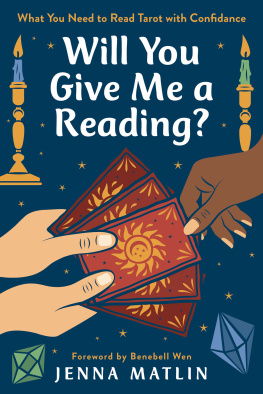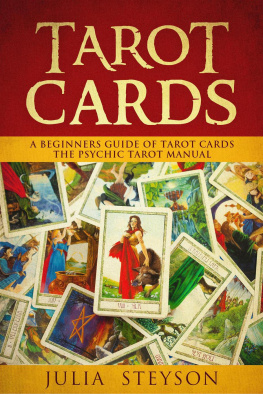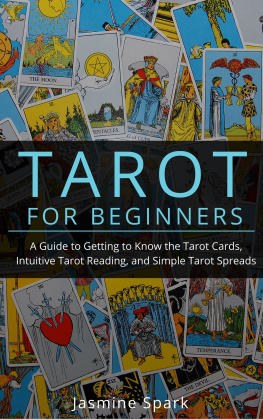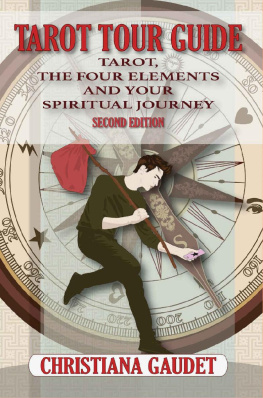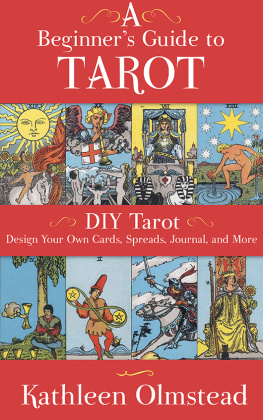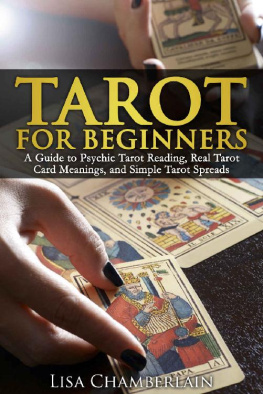Terry Donaldson - Step-By-Step Tarot
Here you can read online Terry Donaldson - Step-By-Step Tarot full text of the book (entire story) in english for free. Download pdf and epub, get meaning, cover and reviews about this ebook. year: 2000, publisher: Thorsons, genre: Religion. Description of the work, (preface) as well as reviews are available. Best literature library LitArk.com created for fans of good reading and offers a wide selection of genres:
Romance novel
Science fiction
Adventure
Detective
Science
History
Home and family
Prose
Art
Politics
Computer
Non-fiction
Religion
Business
Children
Humor
Choose a favorite category and find really read worthwhile books. Enjoy immersion in the world of imagination, feel the emotions of the characters or learn something new for yourself, make an fascinating discovery.

- Book:Step-By-Step Tarot
- Author:
- Publisher:Thorsons
- Genre:
- Year:2000
- Rating:5 / 5
- Favourites:Add to favourites
- Your mark:
- 100
- 1
- 2
- 3
- 4
- 5
Step-By-Step Tarot: summary, description and annotation
We offer to read an annotation, description, summary or preface (depends on what the author of the book "Step-By-Step Tarot" wrote himself). If you haven't found the necessary information about the book — write in the comments, we will try to find it.
Step-By-Step Tarot — read online for free the complete book (whole text) full work
Below is the text of the book, divided by pages. System saving the place of the last page read, allows you to conveniently read the book "Step-By-Step Tarot" online for free, without having to search again every time where you left off. Put a bookmark, and you can go to the page where you finished reading at any time.
Font size:
Interval:
Bookmark:

HISTORICAL ORIGINS
There have been many books on the Tarot, but never one like this.
This book has come into existence as a result of my training other people in the field of Tarot readership, of having trained personally over 1,000 people in the subject to a high standard, in many countries and in many languages, and on a one-to-one basis over a 20-year period.
The techniques which I am giving you in this manual are techniques which I know work, and, if you follow them through, will enable you to experience the wonder which the Tarot holds in store for you.
The experience of Tarot readership is not a trivial one. To desire to work with the Tarot, whether to be able to do readings and to help other people or even for ones own insight into the meaning of life is a really enjoyable thing to be able to do!
The Tarot has always held a great deal of mystery down through the ages, especially for those who have desired to become more familiar with its message.
It is a message - or a map - of how we may achieve greater fulfilment in our lives, through a balancing of the emotional aspects with the material. Not through a denial of either. Many people cant see a way out of their problems because they do not have an alternative point of reference from which they can begin to see what choices they do have. The Tarot reading can be that starting-point for many.
It is important that the Tarot reading is well delivered. It is not enough just to say things off the top of ones head in the hope that maybe some of it will stick or somehow make sense to the Querent. (A Querent is someone who has come to ask a question from the Tarot.) It is also important that the reader is able to work directly from the imagery of the cards, without having to disturb the continuity of the reading by breaking off to get out a book to check on the meanings of cards.
There is an intellectual discipline involved in learning how to read the Tarot, just as there was a discipline involved in first learning how to read the words which you are looking at now. But it is not a difficult one. There is a sensitivity involved in the art of reading the Tarot. It is not a mechanical process either. You could say that it is a bit similar to learning a craft.
There are people out there who still cling to the outdated notion that to be able to read the Tarot you have to be born with a hereditary gift to do so; that the art of Tarot reading is something akin to having dimples or buck teeth: it would have to come down the family line.
The truth is that the door of the Tarot opens itself to all those who genuinely desire to understand its mysteries, and who would make positive use of the knowledge and guidance which they would receive.
The exercises which I am giving you have enabled many people from many different backgrounds, religions, walks of life and educational levels to make sense of the imagery of the Tarot, and to become skilled and effective readers for social, personal and professional purposes.
I have had many professional readers come by to train with me and without exception they have all gained greatly from the experience. I have their feedback letters on my noticeboard for anyone who is interested to come by and look at.
For a long time I was very resistant to the idea of writing up the set of training exercises and making them available indiscriminately to the public. I used to have a very set idea that the Tarot could really only be taught in a one-to-one student/teacher ratio. The Tarot today is being promoted through workshops, weekend courses, correspondence courses, even holidays abroad, as well as in its historical tradition of one-to-one.
Now more than ever there is a real need for people to think in terms of getting themselves trained as readers, so that they can be effective in giving guidance to the many out there in our society who need it, who are seeking. So that they can be instrumental in guiding themselves as well!
The wonderful thing is that in the Tarot, theres something for everyone! The basic message of the Tarot is that there is hope and that such hope may be realized through creative change.
In the pictures of the Tarot we have a set of windows through which we may look at life. We have a description of how the mighty creative forces of the universe ebb and flow, of how Yin and Yang manifest their energies in a physical world.
Compressed in the cards, we have many legends and stories from mythologies, astrological and archetypal significance, and esoteric secrets from a wide range of backgrounds.
But they are all different fingers pointing to the same moon: hints as to the kind of perceptions we first need to make in order to be able to change our lives. In other words, we all see the same truths from a different viewpoint.
Thus the meanings of the Tarot cards will actually change for you over time. As you grow and develop as a being, so your own needs will evolve and so, therefore, what you see taking place in the Tarot imagery will go through transformation.
As to the historical origins of the Tarot, there are many different explanations. The actual Tarot as we know it today dates back to fourteenth-century Italy where we find a nobleman commissioning a hand-painted deck to commemorate the marriage of his daughter. But there are historical records to indicate the use of cards for divinatory purposes earlier than that.
We have always used symbols, in one form or another. Indeed, it is where we get the letters of the alphabet from, each of which at one time held a particular meaning. The Runestones, the Ogham, etc, all date back a lot further than the Tarot as such, although in one sense we might regard them as the earliest forms of Tarot, with their straight lines being marked on pieces of wood or stone to represent storm, harvest, war, protection, etc.
It is from the casting down onto the ground of these stones in ancient times that we have the phrase magic spell, because from the single letters which would be carved on each individual stone, the local wise person would be able to spell (i.e. make out) the words or utterances of the gods which they believed protected them.
The word magic is from the same root as the words image, imagination, magi. It is therefore pointing us in the direction of achieving wisdom, through the development of our ability to creatively visualize, to imagine. To put aside your preconceived notions, to let your intuition function with less restraint from your conscious mind, to become aware of your own limitations and to move increasingly beyond them.
This is the very essence of how to approach the Tarot.
One thing I would ask of you before we begin this course: put aside any other books which you have on the subject, books you have already tried to work with. If you go to one doctor for a course of treatment, it would be inappropriate to continue taking medicine from other prescribers.
You will find all you need to learn the art of Tarot readership here in THIS course. I mean it. After you have completed it, you can then go back to all of those other books and you will then get 10 times more from them than you would ever have done before.
EFFORTLESS EFFORT
You will master the Tarot not by struggling with the meanings or by battling with the cards in any sense whatsoever.
Next pageFont size:
Interval:
Bookmark:
Similar books «Step-By-Step Tarot»
Look at similar books to Step-By-Step Tarot. We have selected literature similar in name and meaning in the hope of providing readers with more options to find new, interesting, not yet read works.
Discussion, reviews of the book Step-By-Step Tarot and just readers' own opinions. Leave your comments, write what you think about the work, its meaning or the main characters. Specify what exactly you liked and what you didn't like, and why you think so.

